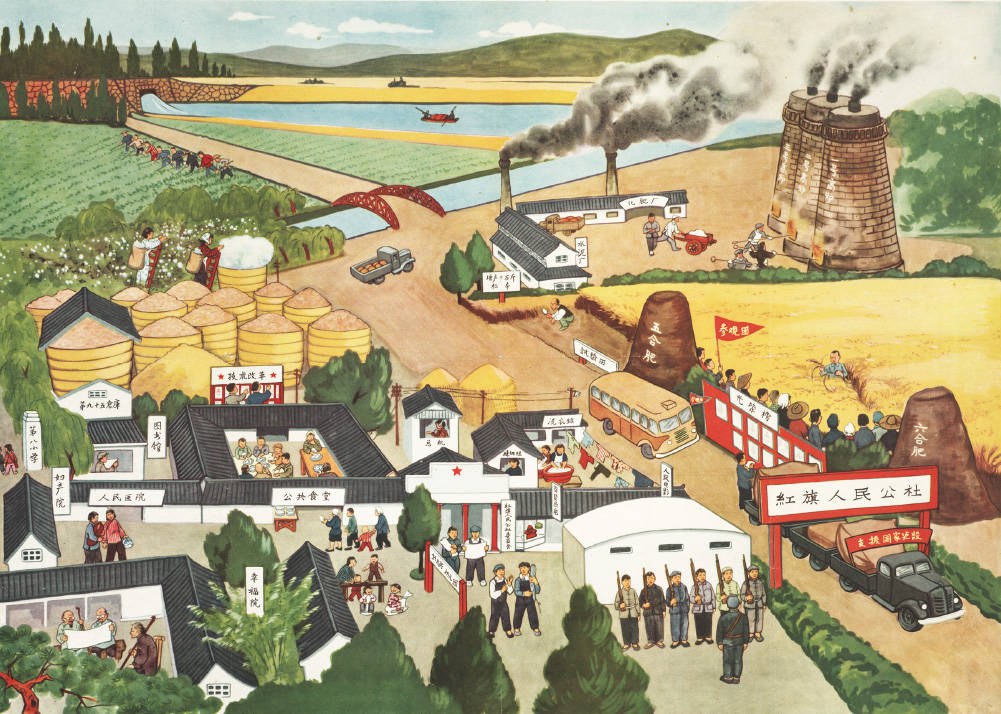Visual Source 21.2
Building the New Society
The centerpiece of Mao’s plans for the vast Chinese countryside lay in the “people’s communes.” Established during the Great Leap Forward in the late 1950s, these were huge political and economic units intended to work the land more efficiently and collectively, to undertake large-scale projects such as building dams and irrigation systems, to create small-scale industries in the rural areas, and to promote local self-reliance. They also sought to move China more rapidly toward genuine communism by eliminating virtually every form of private property and emphasizing social equality and shared living. Commune members ate together in large dining halls, and children were cared for during the day in collective nurseries rather than by their own families. Visual Source 21.2, a poster created in 1958 under the title “The People’s Communes Are Good,” shows a highly idealized image of one such commune. See also the celebratory poster.

Question
What appealing features of commune life and a communist future are illustrated in these posters? Notice the communal facilities for eating and washing clothes as well as the drill practice of a “people’s militia” unit at the bottom of the picture.
Question
One of Mao’s chief goals was to overcome the sharp division between industrial cities and the agricultural countryside. How is this effort illustrated in these posters?